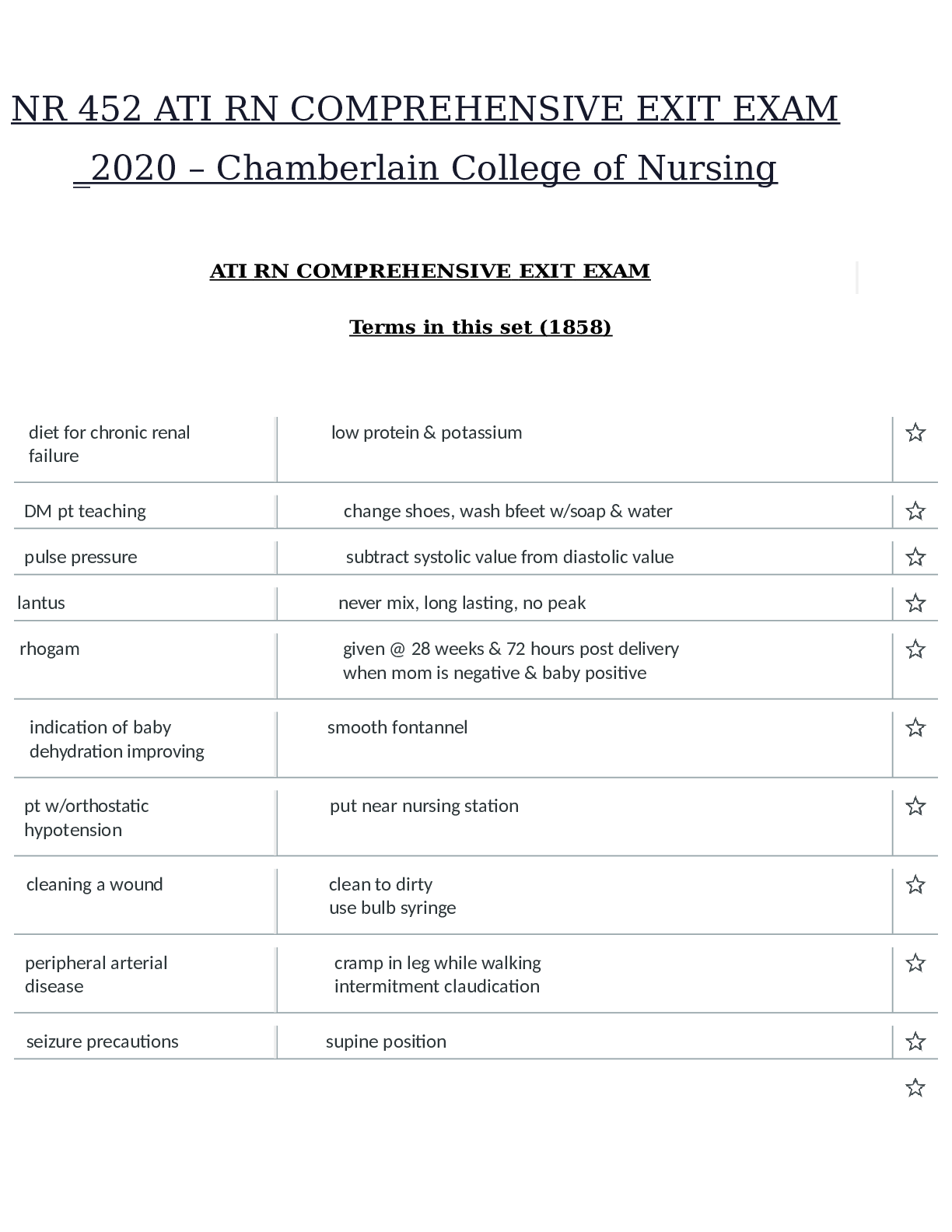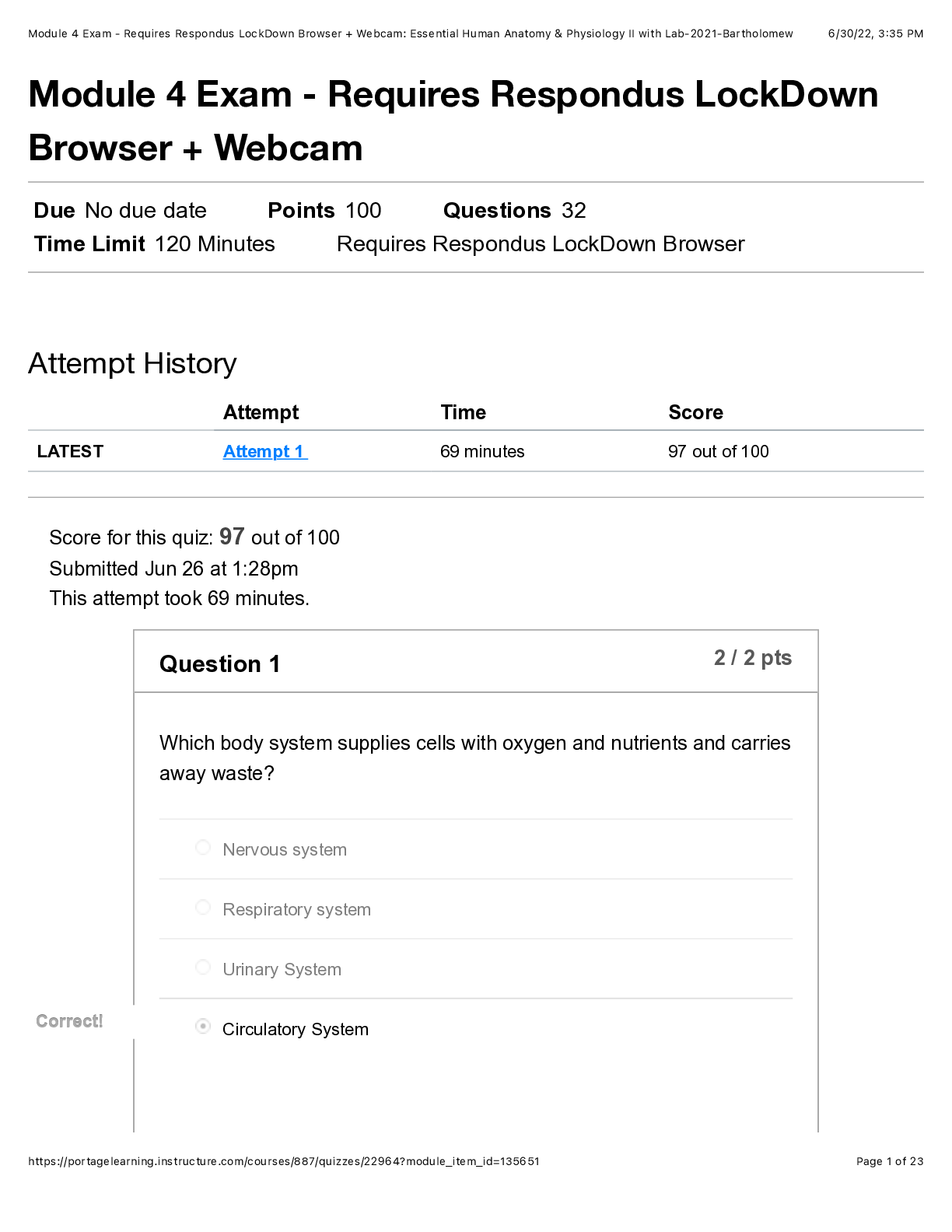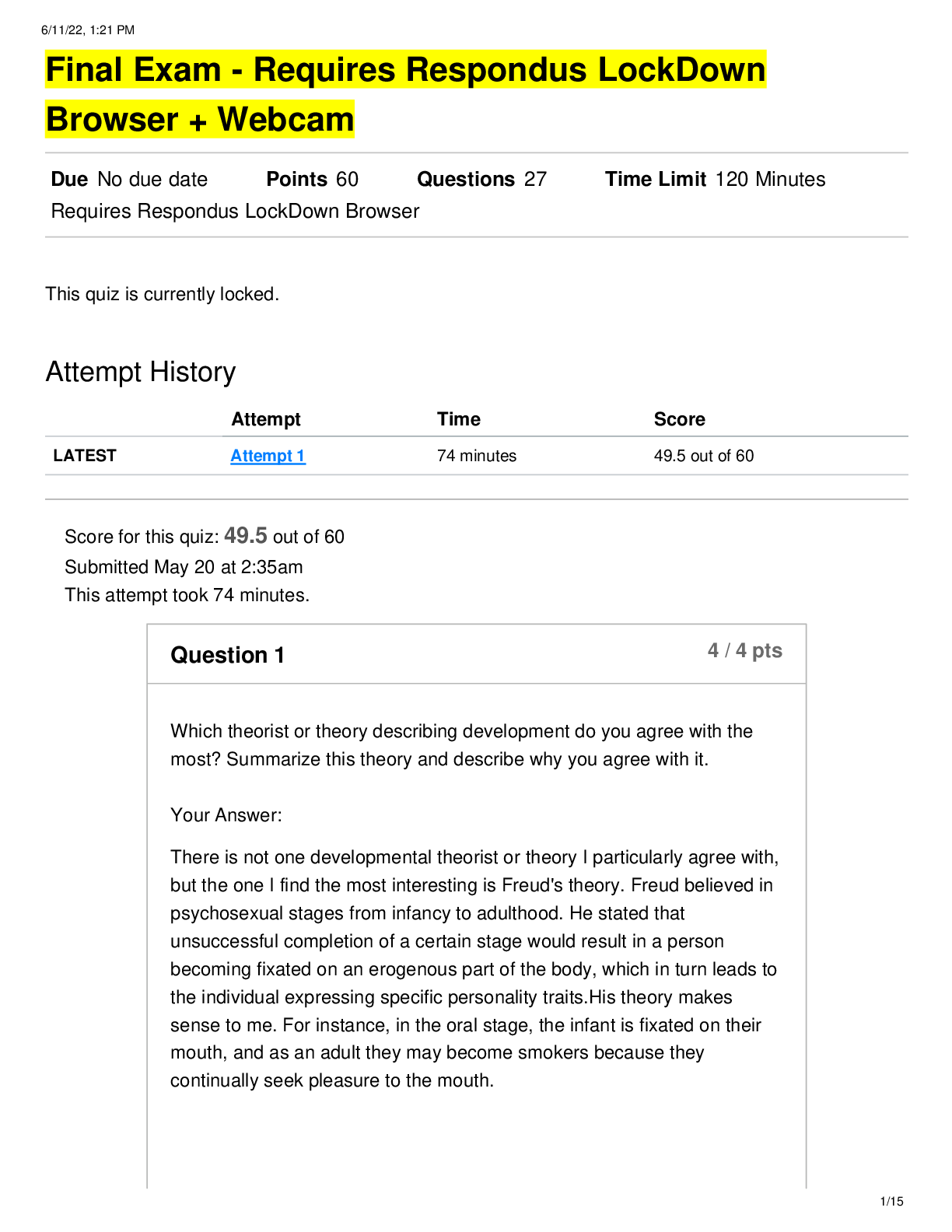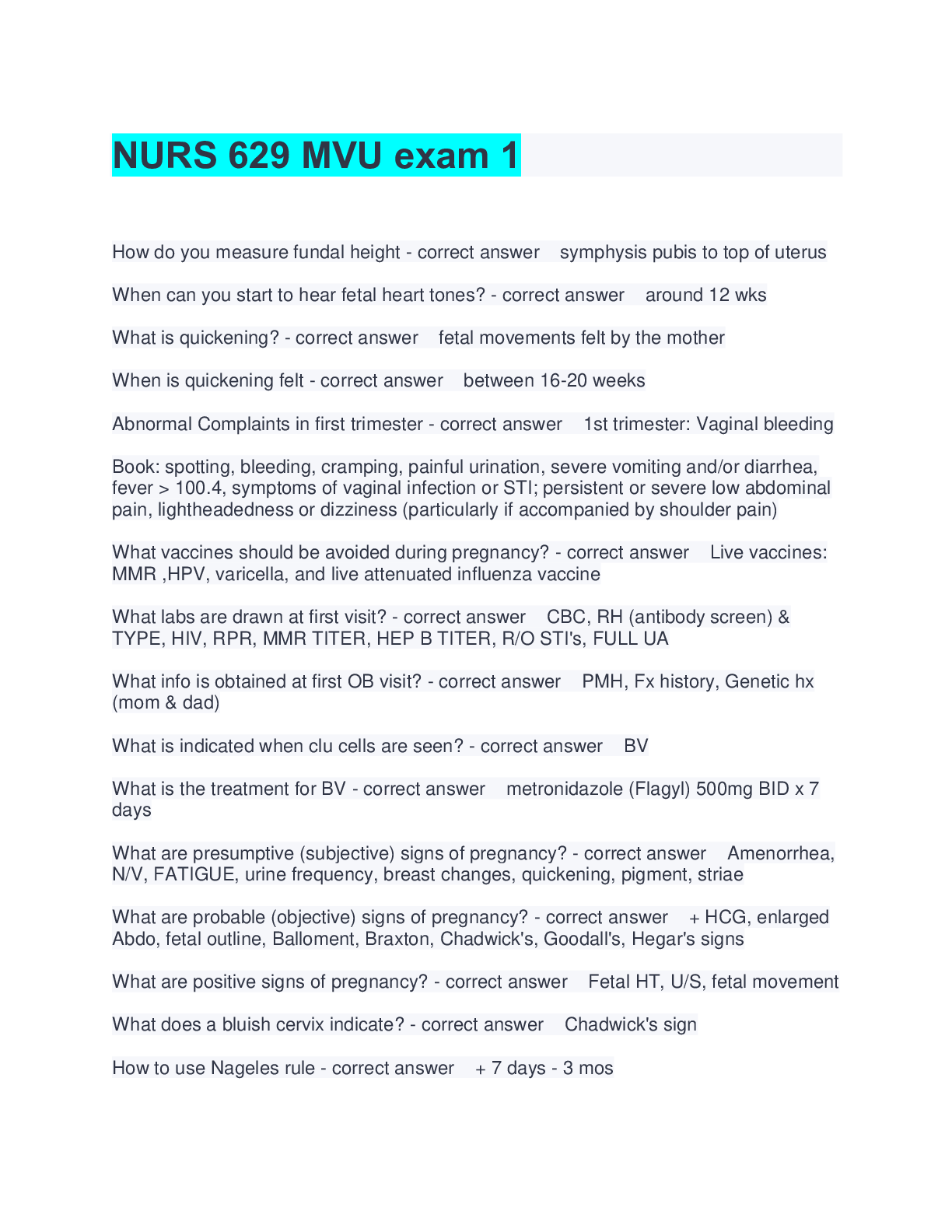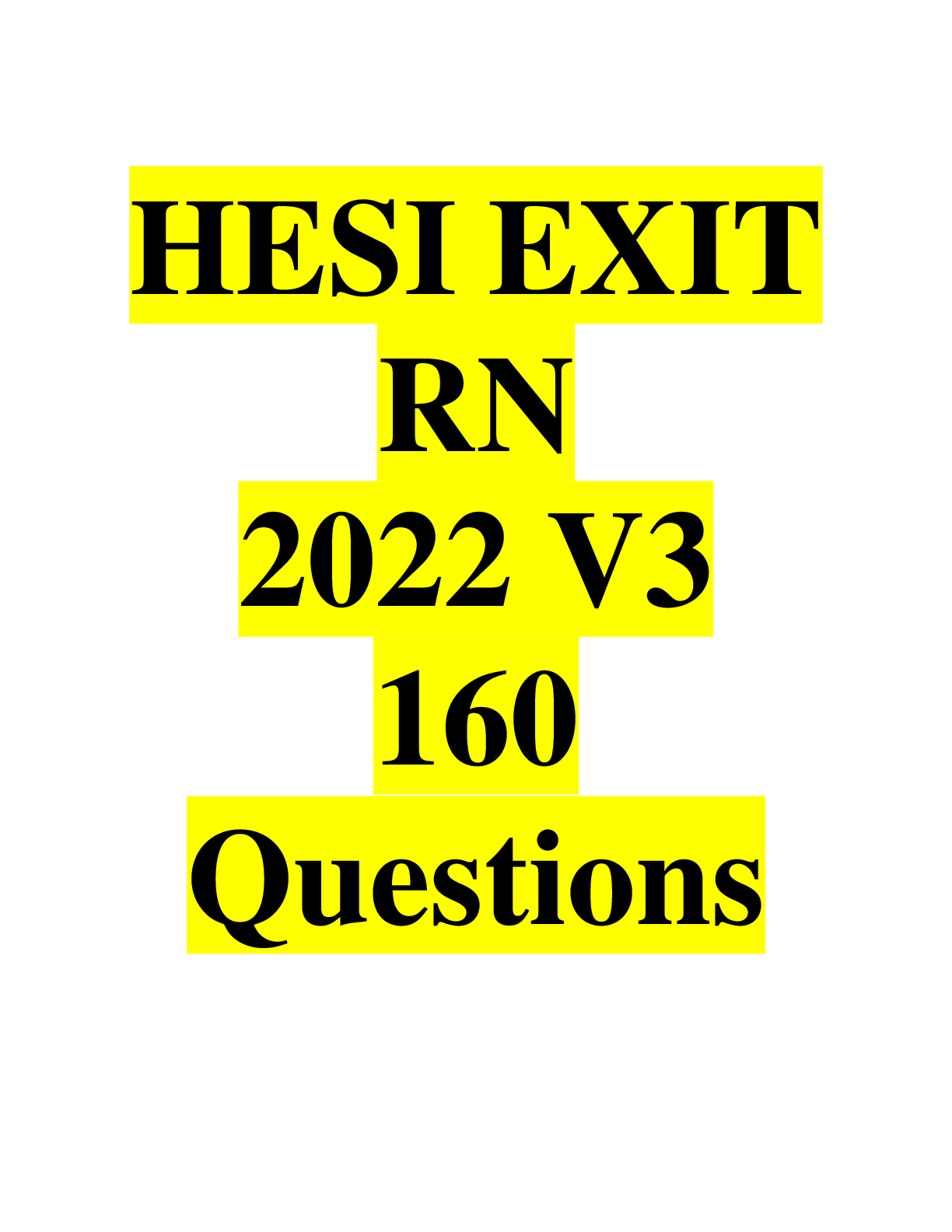Health Care > EXAM PROCTORED > NR 228 Nutrition Exam 1 Questions Answers exam (All)
NR 228 Nutrition Exam 1 Questions Answers exam
Document Content and Description Below
NR 228 Nutrition Exam 1 Questions Answers exam Food preference -CORRECT ANSWER -- Those *foods we choose to eat when all foods are available at the same time and in the same quantity*. Determi... ned by genetic and environmental effects. Food choice -CORRECT ANSWER -- This concerns the specific foods that are *convenient* to choose when we are actually ready to eat; rarely are all our preferred foods available at the same time to satisfy our preferences. These are restricted by convenience. Food liking -CORRECT ANSWER -- Considers what food we *really like to eat*. We may want to eat foods that enhance our health, but we like to eat chocolate cake. What affects someone's food preference? -CORRECT ANSWER -- 1. Genetic Determinants (ex. liking for salts or sweets) 2. Environmental influences 3. Media influences Hunger -CORRECT ANSWER -- The inability to access enough food to feel nourished and satisfied. Variety -CORRECT ANSWER -- One of the four themes of MyPlate recommendations. This involves eating food from all food groups and subgroups. Proportionality -CORRECT ANSWER -- One of the four themes of MyPlate recommendations. It involves eating more of some foods (fruits, vegetables, whole grains, fat-free or low-fat milk products) and less of others (foods high in saturated or trans fats, added sugars, cholesterol salt, and alcohol). Moderation -CORRECT ANSWER -- One of the four themes of MyPlate recommendations. Choose types of foods that limit intake of saturated or trans fats, added sugars, cholesterol, salt, and alcohol. Activity -CORRECT ANSWER -- One of the four themes of MyPlate recommendations. Be physically active every day. Syndrome X -CORRECT ANSWER -- Also known as "metabolic syndrome" is a group of heart disease risk factors including *abdominal obesity, glucose intolerance, high blood pressure, and abnormal blood lipid levels* Healing foods pyramid -CORRECT ANSWER -- The ___________ ________ __________ emphasizes foods with restorative benefits and/or essential nutrients in natural forms. The core of dietary intake is primarily plant-based foods, with small amounts of animal foods. the "healing" aspect of this also applies to the production of the food supply. Experimental study -CORRECT ANSWER -- Type of research. Consists of an *experimental group* receiving treatment (or dietary change) and a *control group* receiving no treatment (no dietary change); differences, if any, are then noted. called clinical or laboratory study. Case study -CORRECT ANSWER -- Type of research. analyzes an *individual case* of a disease or health difference to determine how factors may influence health; a naturalistic study because no manipulation of dietary intake or behavior occurs. Epidemiologic study -CORRECT ANSWER -- Type of research. *Studies populations*; tracks the occurrence of health or disease processes among populations; may use historical data, surveys, and/or medical records to determine possible factors influencing the health of a group of people. Irradiation -CORRECT ANSWER -- A procedure by which *food is exposed to radiation* that destroys microorganisms, insect growth, and parasites that could spoil food or cause illness. This food preservation technology results in an increase of international and domestic food trade. These foods may have a *longer shelf life* Glycogen -CORRECT ANSWER -- Carbohydrate energy stored in the liver and in the muscles. Glycogenolysis -CORRECT ANSWER -- Process when glycogen stored in the liver and muscle tissue is converted back to glucose. Gluconeogenesis -CORRECT ANSWER -- The process of producing glucose from fat. Ketone bodies -CORRECT ANSWER -- Created when fatty acids are broken down for energy when sufficient carbohydrates are unavailable. Insulin -CORRECT ANSWER -- A hormone produced by the beta cells of the islets of Langerhans, lowers blood glucose levels by enhancing the conversion of excess glucose to glycogen through glycogenesis or to fat stored in adipose tissue. It also eases the absorption of glucose into the cells so the use of glucose as energy is increased. Glucagon -CORRECT ANSWER -- This stimulates conversion of liver glycogen to glucose, assisting the regulation of glucose levels during the night. [Show More]
Last updated: 2 years ago
Preview 1 out of 10 pages
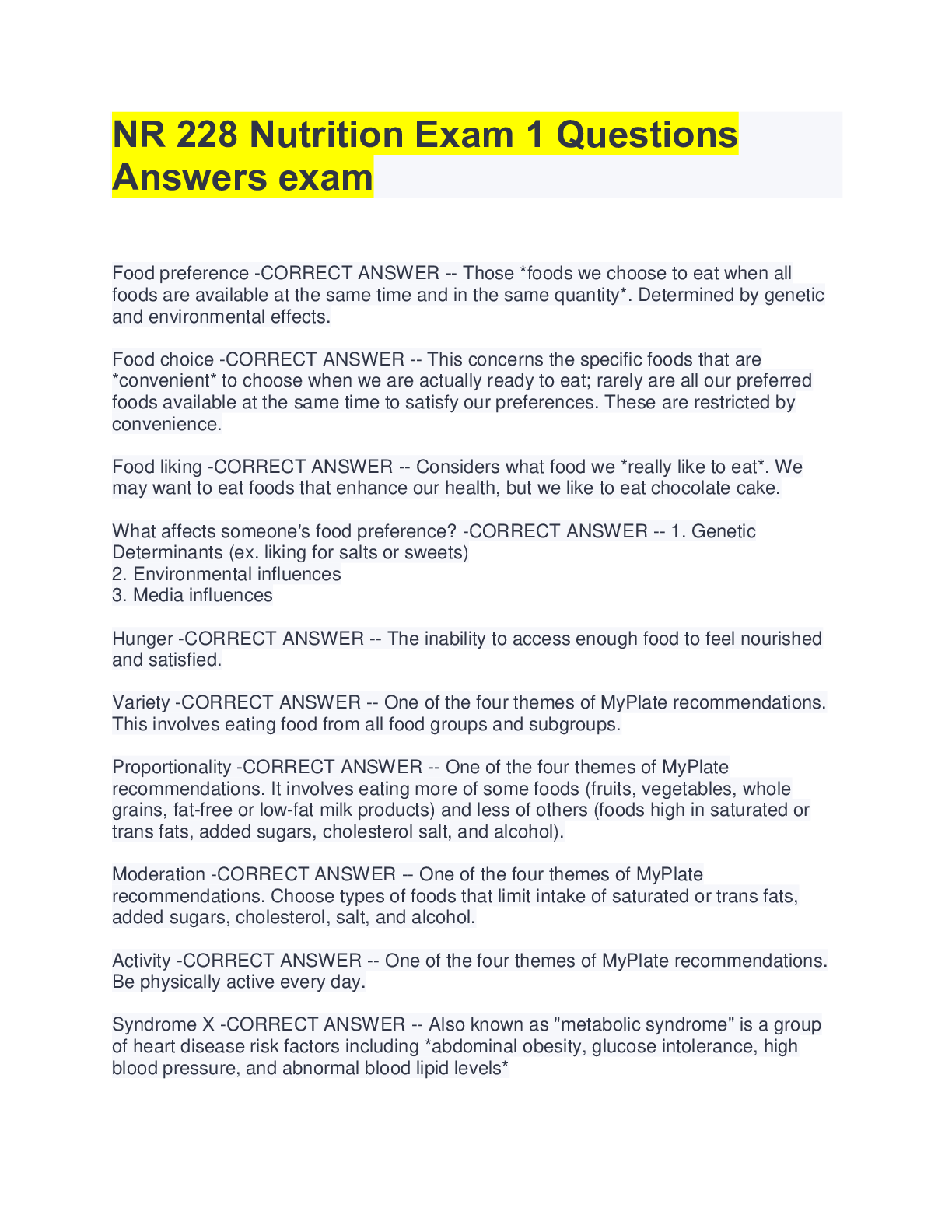
Buy this document to get the full access instantly
Instant Download Access after purchase
Buy NowInstant download
We Accept:

Reviews( 0 )
$11.00
Can't find what you want? Try our AI powered Search
Document information
Connected school, study & course
About the document
Uploaded On
Sep 10, 2022
Number of pages
10
Written in
Additional information
This document has been written for:
Uploaded
Sep 10, 2022
Downloads
0
Views
83

.png)


